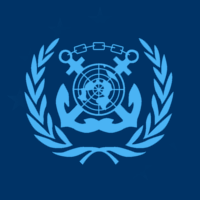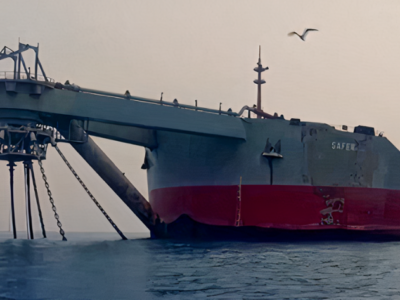Where ships go to die
Switzerland and the uncontrolled dismantling of ships
Decommissioned deep-sea vessels are floating toxic waste. Their disposal is laborious and costly, and regarded as a menace by those who want to protect both the workers and the environment. The more unscrupulous companies have their ships scrapped on South Asian beaches, where they poison the waters and endanger the wreckers. Swiss companies are among those who save a lot of money that way.
GIE GORIS - EDITOR IN CHIEF - MO* MAGAZINE
Research partner: Nicola Mulinaris - NGO Shipbreaking Platform
Financial supporter: Public Eye
The road to Alang is lined with shops and warehouses selling items that come from ships that used to sail across oceans: oak desks, faux crystal chandeliers, life vests and lifeboats, ropes, electric cables and switches, leather chairs, paintings, giant generators and motors – just about anything you can name. This is ship recycling in its most literal sense, even though these commodities are in reality no more than surplus products. The real reasons why huge ships end up on the beaches of Alang are their steel hulls and frames. Steel is where the real profits are to be made.
Alang and neighbouring Sosiya used to be simple fishing villages on India’s north-western coast. Today, they are famous – or rather infamous – because shipbreaking yards are now taking up kilometers of beaches along the Gulf of Khambhat, where the Arabian Sea cuts deep into the state of Gujarat. These shores have thus become boat cemeteries.
A few days before we arrived in Alang, in early September 2018, two men died while working at the RKB Group-owned Honey Ship Breaking yard. Bhuddabhai Kudesha from Alang, and Ali Ahmed from Jharkhand, fell victim to an industry often seen as providing “the most dangerous jobs in the world”. The same yard was used less than a year ago by the Swiss company MSC to break up the MSC Alice. You can read more on this story below.

NO TRESPASSING!
The omnipresence of impressive images of ocean-going giants on Asian beaches could give the impression that the yards are quite accessible. This is not the case. Driving into Alang, a big blue banner welcomes visitors to the Alang-Sosiya Ship Recycling Yard, but it soon becomes clear that the welcome is conditional. Journalists, academics and foreigners can usually only enter with permission from officials in Gandhinagar, Gujarat’s capital. The procedure can take months, or even longer, and in the rare instances where permission is granted it comes with many restrictions that limit access. Not having this green light from Gandhinagar, we were stopped at our first attempt to visit Alang. The Gujarat Maritime Board allowed us to go on the roof of their building overlooking the yard, but even a carefully disguised attempt at a selfie was stopped in its tracks: “No pictures, sir!” So it was clear that one needs to be inventive and try to circumvent the Gujarat Maritime Board checkpoint, persuade a yard owner to give the go-ahead, or have an extremely well connected liaison person who can introduce you. We combined these three conditions to get closer to the breaking yards.

Bhuddabhai’s last day
Bhuddabhai was 33. On August 31 2018, as on every other working day, he woke up around six in the morning, when the first light penetrates the darkness and ends the silence in his village. His eight-year-old son and two daughters, aged six and four, were still sleeping, but his wife was already up and preparing their breakfast. Six years ago, Bhuddabhai had managed to get a job on the shipbreaking yards of Alang, situated about three kilometers from their house. He knew how rare it was for a Kholi – originally a fisherman’s caste but now mostly day laborers in seasonal agriculture – to find work in that industry.
On the morning of the accident, Bhuddabhai was busy removing toilets from the MV Ocean Gala. His employer would later sell these items to the second-hand shops that line the road to Alang. It wasn't a particularly well-paid job, but it certainly made a better living than the farm work his father and younger brother Rajabhai did. Bhuddabhai would often lend them a helping hand on Sundays or before he left for the yards on his Honda motorcycle at 7.30 in the morning. On that day, Bhuddabhai took, for the last time, the dusty road from his home to the Honey Ship Breaking Yard.
We visited Alang only a few days later, and the exact circumstances of the accident were still murky when we spoke to his family. What transpires is that a piece of the hull must have broken off unexpectedly, taking Bhuddabhai with it as well as Ali Ahmed, the gas cutter who was cutting through the steel on the ship's ninth floor to create an extra exit. None of the workers were wearing safety belts. Nor were they required to, according to the shipyard’s owner. They were working inside the ship; only the cutters working on the ship’s exterior must wear safety belts.

An endless list of problems
To better understand the conditions under which breakers work in Alang, we met Vidyadhar Rane, who is secretary-general of the union trying to organize workers there. In addition to the safety problems on the sites, there are many essential points that should be improved or obtained: “Housing. Toilets. Canteens. Correctly paid overtime. Paid holidays. Health and accident insurance for everyone. Adequate hospital capacity.” The latter can make the difference between life and death when disaster strikes. When Bhuddabhai had the accident at Honey Ship Breaking Yard, he was brought to the public hospital in Bhavnagar, a provincial town more than 50 kilometers from Alang. It takes more than an hour to cover that distance on the narrow two-lane road, full of speed bumps, stray cows, trucks and dangerous traffic. There is a small, 10-bed clinic run by the Indian Red Cross and the Alang Hospital, which has 20 beds, but these do not have the equipment to deal with serious injuries. These infrastructures are completely insufficient to meet the needs of almost 160 yards in Alang, on which 15,000 to 30,000 workers dismantle huge ships under extreme conditions, risking their limbs and lives. The numbers given vary with each interview, and official statistics are not available, since most labor is informal anyway.
A billion rupees industry
“There is no union in Alang,” says Nikhil Gupta, co-owner of Rudra Green Ship Recycling, one of the “better” shipbreaking yards in Alang. “And that makes doing business in Gujarat so nice: we have no unions because everyone is on the same page.” Gupta makes this surprising – and patently untrue – statement at the end of an interview during which he has tried to explain the economic laws of demand and supply that govern the world of globalized shipping and shipbreaking, or as industry captains like him prefer to call it: “recycling”. Although the other yard owners we speak to aren’t as disparaging, no-one has anything resembling a formal relation with a union. Nor do they engage in collective bargaining at company or sectoral level. “When there are problems, we deal with the workers directly. Much faster that way” says Nitin Kanakiya, the secretary of the Ship Recycling Industry Association (SRIA) and the owner of Triveni Yard, in Alang.
“The laws to protect workers are insufficient and are not enforced,” explains Dr Sahu Geetanjoy, a researcher at the Tata Institute for Social Studies in Mumbai, and one of just a few academics studying labor conditions in the shipbreaking industry. The government’s own financial interests may explain its lack of commitment to enforcing labor and environmental rules, he says. Through taxes and the leasing of land on the beaches, the shipbreaking industry contributes around 7 billion rupees, or about €87.5 million, to the Gujarat state coffers per year.
When we asked Bhuddabhai’s family what they expect from the owner of the shipbreaking yard, the answer came instantly: “Nothing.” Their answer reflects centuries of humiliation and marginalization; Kholis have never been able to expect anything from the wealthy or the upper castes. Bhuddabhai’s brother and nephew still don’t know whether the family will receive any compensation. Raj Bansal, the Honey Ship Breaking Yard owner, promises that the family will receive about €6,250, an amount that corresponds to three years of work on the yard. But a pension for the widow, Bansal says, will not be provided. Added to the immense pain of having lost her husband and the father of her three children is the destitution, more desperate than anything she has known so far.
Every year around 1000 ships are scrapped.
65 to 75 % of them end up on one of the three breaking beaches in India, Pakistan and Bangladesh.
Bhuddabhai's tragic story evokes the threat to the lives of so many others; tens of thousands of men who, to support themselves and their families, dismantle ships with little or no protection on the beaches of South Asia. According to data published by the Brussels-based international NGO Shipbreaking Platform, every year around 1000 ships are scrapped, and 65 to 75 percent of them end up on one of the three breaking beaches in India, Pakistan and Bangladesh.
Once a ship is destined for dismantling, it is considered to be hazardous waste under international law, specifically the 1989 Basel Convention on the Control of Transboundary Movements of Hazardous Wastes and their Disposal.
Weakening and circumventing laws
Click on the images below to discover the legal framework's weaknesses and how ship owners use loopholes to circumvent legislation.

UNEP

IMO

EU
UNEP Basel Convention
The United Nations Environmental Program (UNEP) adopted the Basel Convention on the Control of Transboundary Movements of Hazardous Wastes and their Disposal in 1992 following numerous hazardous waste trafficking scandals in the late 1980’s. The Basel Convention, which has been transposed into EU law by the EU Waste Shipment Regulation, controls the international trade of hazardous wastes. It is relevant for ship dismantling as a ship, which usually contains hazardous materials within its structure, is considered hazardous waste when destined for breaking. The Basel Convention, ratified by 187 countries, remains the only international legislation in force that aims at protecting developing countries from the dumping of toxic ships. Still, the shipping industry has exploited loopholes in the Basel regime and opted for the more profitable breaking of ships on South Asian beaches. Due to the fact that a vessel becomes waste only when the intent to dispose of it is evident, to escape the Basel regime it is sufficient for ship owners to hide their true intentions from the authorities of the exporting state - the state from where the vessel leaves for its final voyage to the scrap yard.
IMO Hong Kong Convention
When the Basel Convention State Parties started discussing more effective ways of regulating the trade of toxic ships – such as pinpointing the responsibility of countries where ship owners are headquartered – the United Nations’ specialized agency International Maritime Organization (IMO) decided to start working on a new legally binding convention specifically on ship recycling to be based instead on enforcement by the flag states. The resulting Hong Kong Convention (HKC) on the Safe and Environmentally Sound Recycling of Ships is not expected to enter into force before many years, since, to date, it has been ratified only by six countries. Civil society has been joined by the UN Special Rapporteur on Human Rights and Toxics, European policy makers and developing countries in denouncing the HKC for setting low standards that would rubberstamp current dirty and dangerous practices on South Asian beaches.
EU Ship Recycling Regulation
At the European level, due to the ease by which ship owners have been circumventing existing waste laws, a new regulation on ship recycling was adopted. From 31 December 2018, EU-flagged vessels can only be recycled in facilities compliant with the regulation’s requirements and included in the European List of ship recycling facilities. The EU regulation sets higher standards than the HKC: the beaching method is not allowed and requirements related to downstream toxic waste management as well as labor rights are included.
The most dangerous job in the world
In 2015, the International Labour Organisation (ILO) warned about the dreadful consequences of this practice: “Shipbreaking has grown into a major occupational and environmental health problem. It is amongst the most dangerous of occupations, with unacceptably high levels of fatalities, injuries and work-related diseases.”
According to The Indian Supreme Court, the incidence of fatal accidents in shipbreaking (two in every 1,000 workers) is higher than that in mining (0.34 per 1,000 workers).
In India, data from the Gujarat Industrial Safety and Health Department show that at least 470 fatal accidents occurred in Alang between 1983, the start of the local shipbreaking industry, and 2013, indicates Dr Geetanjoy of the Tata Institute for Social Studies. “There is no central and reliable register of accidents in the yards,” he explains. But according to the Indian Supreme Court, the incidence of fatal accidents in shipbreaking (two in every 1000 workers) is higher than that in mining (0.34 per 1,000 workers), which is nevertheless considered to be “the most accident-prone industry.”
In 2009, the UN Special Rapporteur on toxic wastes already described in a report the long-term risks of shipbreaking, a time-bomb: “In shipbreaking yards, workers are often exposed to toxic chemicals including asbestos dust and fibres, highly toxic industrial chemicals which have been banned for decades but are still present in ships, as well as lead, mercury, arsenic or cadmium in paints, coatings and electrical equipment. Workers are often without protective equipment that reduces exposure. Prolonged exposure to these chemicals increases the risk of developing slow-progressing but fatal diseases, which may not become apparent until many years after exposure.”
As in other sensitive sectors, the human and environmental costs of such practices are paid by poor countries. The current Special Rapporteur, Baskut Tuncak, is more explicit about the responsibility of the shipping industry, “which externalises impacts on poor workers and communities in developing countries”. In that sense, container ships and other vessels are, right to the end, sad symbols of the abuses of globalization.
Ecological disaster and the “gravity method”
The environmental consequences are also dramatic. In June 2016, the EU Directorate-General for the Environment published an overview of several studies, one of which clearly showed just how heavily the Alang–Sosiya natural environment has been polluted by copper, cobalt, manganese, lead, cadmium, nickel, zinc and mercury. The Commission also refers to a previous study, published in 2001, that found that mercury levels in Alang were 15,500 percent higher than at a control site, and 16,973 percent higher for petroleum hydrocarbons. The researchers also detected the presence of certain bacteria at high levels.
Questioned on this point, Dr Geetanjoy Sahu, at the Tata Institute of Social Sciences, complains about the dire lack of research into the state of fish populations, groundwater, air quality and noise pollution in the region. “The government makes it all but impossible to work independently in Alang, even for Indian researchers. That makes one wonder: what is it that needs to be hidden? What interests need to be protected so desperately?”
Some of the pollution is directly related to what the shipbreaking industry calls the “gravity method”: this is when large parts of the ship are cut with a blowtorch and crash down on the beach. The incredible impact of falling tons of steel combined with the process of cutting steel using very high-temperature gas flames causes often-toxic paints to be released into the sea and soil. The ships are broken during low tide and all the oil residues, heavy metals and toxic substances that aren’t cleaned up before high-tide are spread across the entire marine environment.

“Europe is hypocritical”
However, all the site owners we interviewed have a common refrain: “Alang’s yards are well on track to becoming green, but the European companies lack serious commitment to the cause they preach.” Nithin Kanakiya, owner of Triveni ship recycling yard in Alang and the secretary of the local Ship Recycling Industry Association (SRIA), is even louder and clearer. “Europe is hypocritical. From one side, it demands the impossible in terms of salaries, insurances, safety and environmental protection, while from the other side their only interest is profit maximization, for which they are prepared to play one yard against the other,” he insists.
We asked Komalkant Sharma, the owner of the Leela Group of Companies, whether he looks at the big shippers for support: “When we find that ship owners are only interested in top dollars, then it becomes impossible for us to continue doing business with them. Leela aims to be better than the others in social and ecological terms, but that does not come for free. And that is why European ship owners should bear their share of responsibility and encourage the necessary investments by accepting lower prices for their vessels, or by engaging in the longer term with recycling companies. But the ship owners dump the responsibility on the recyclers.”
If Leela is considered to be one of the “best” yards in Alang, then it’s good to remember that Ravindra Chaudhari died there on Sunday, April 15 2018, while doing maintenance work. A sheet of steel, which was half cut out of the hull of the vessel Plata Glory, fell down.
A hell for (mostly) internal migrants
Many vessels are dismantled in Chittagong, Bangladesh, where labour and environmental conditions are even worse than at Alang. Mohamed Ali Shahin, who works for Young People in Action (YPSA) and is deeply involved in the shipbreaking issue, told us on the phone that on 10 November a worker at the SH Enterprise yard died while breaking the Ukraine-owned MV Velda. And that the day before another worker died while disassembling the Indian-owned Peri at the Golden Iron Works yard. Earlier this year, two workers died on the Zuma Enterprise yard; they were working on the MT EKTA, an oil tanker that, according to shipping databases, was sold to the breaker by the Swiss shipping company Navimar. Navimar bought the vessel that was operated by Maran Tankers, a subsidiary of Greek Anangel Shipping Group, in September 2017, only a month before it was brought to the beach at Chittagong, so it’s clear that the Swiss company acted as a conduit to scrap the ship, making a purely financial transaction.

Zuma is not only unsafe, it’s also cheap with regard to workers’ health. “Their practice,” adds Shahin, “is to pay the family of a worker who died in an accident the legal minimum of 100.000 taka (a little over 1000 euros). But other yards would compensate such a tragic loss with 500.000 taka.”
19 fatalities in 2018, a new sad record
The government should do more to make it cleaner and safer, he argues, but it’s not just a Bengali responsibility. As he emphasizes: “European ship owners could do so much more to demand and stimulate safe and clean shipbreaking. They can enforce European standards and should invest, for instance, in waste-collection facilities. And, of course, they could start with cleaning out their ships of all the toxic materials before they even send them to South Asia.”
As in Alang, many of the shipbreaking workers in Chittagong are internal migrants who live in unsanitary accommodation. They work long hours, usually without labor contracts, and can take no holidays. The shipbreaking yards prevent trade unions from organizing the workers. In Chittagong, at least 15 workers were killed in 2017, while at least 22 suffered severe injuries. Provisional figures for 2018 indicate that 19 workers have lost their lives, the highest number in the past nine years. The majority of the deaths are caused by fires, falls from great heights, and workers being crushed by ship parts that come loose.


Switzerland is a global dumper, too
Although it has no access to the sea, Switzerland is home to big companies specializing in maritime chartering. Whereas Mediterranean Shipping Co. (MSC) is well known among cruise lovers, most people have never heard of the other shipping companies, most of which are domiciled on the shores of Lake Geneva. Even less well known is the sad fact that the Swiss shipping sector also has a poor track record regarding the dismantling business in South Asia.
According to our calculations and based on a variety of industry sources, ninety Swiss-owned vessels ended up on beaches in Bangladesh, India and Pakistan between 2009 and today. The names of the companies involved are on the record, but receive little publicity: Atlanship S.A., Doris Maritime Services S.A., FleetPro Passenger Ship Management AG, Lumar S.A., MSC Mediterranean Shipping Co., Sallaum Group SA, Shipfin S.A., Sider Navi S.p.A., and Taunus Shipping S.A.
According to the UN Conference for Trade and Development (UNCTAD), Switzerland ranks 20th in the world in terms of the number of ships owned. However, the NGO Shipbreaking Platform reports that, in terms of the number of ships scrapped on South Asian beaches, Switzerland rises in the ranking. Almost all Swiss ships end their working years in such conditions, making Switzerland one of the biggest polluters in terms of the irresponsible management of its old ships.
MSC does not walk its talk
Of the 90 Swiss-owned vessels scrapped on South Asian beaches in the last ten years, a stunning 80 belonged to MSC.
Of the 90 Swiss-owned vessels scrapped on South Asian beaches in the last ten years, a stunning 80 belonged to MSC, the second-biggest container shipping company in the world. This giant with a turnover of 27 billion euros in 2017 does not have to publish its numbers, since it’s a family owned and run company, headed by its Italian co-founder Gianluigi Aponte.
In 2009, he received the Neapolitan Excellence of the World award from the then Prime Minister Silvio Berlusconi, and in 2013, the Cavaliere del Lavoro (Knight of Labor) honorary title from the President of the Republic, Giorgio Napolitano. To be considered for the title, candidates must have an impeccable record of civil and social accomplishments, and have abided by all tax laws, while paying particular attention to workers’ protection and assistance. More recently, in October 2018, MSC won the Greenest Ship Owner of the Year award at the annual Green Shipping Summit in Amsterdam. “MSC was commended for its efforts to promote the sustainable use of marine resources and investments in green technologies,” the company writes on its website.
A shipping company that, to quote their Chief Sustainability Officer, aims “to become the most sustainable, technologically advanced and customer-focused shipping line in the industry” while at the same time sending its decommissioned vessels to South Asian beaches, has some explaining to do. We therefore contacted MSC two weeks after they were honored with the Greenest Ship Owner Award 2018 and told them that we wished “to get the facts and numbers about ships sold for breaking/recycling and to understand the decision processes or criteria used by MSC.” The response from Geneva was brief: “Thank you for your interest in MSC’s environmental strategy. As of today, we decline to take part in your research.”
Inexistent standard
In MSC’s sustainability report there is only one reference to the issue: “Our ship recycling practice is another important area of emphasis for MSC, as it is strictly related to labor standards, environmental protection and human rights […] only recycling yards with IMO HKC standards (see box 3) , ISO 14001 (environment), ISO 30001 (recycling management) and OSHAS 18001 (health & safety) standards are selected for recycling at the end of the useful life of a ship.” It’s remarkable that MSC refers to ISO 30001 as one of the conditions for working with shipbreaking yards, as this ISO standard number does not actually exist! Or perhaps it’s symptomatic of the whole sustainability of its shipbreaking practice: big declarations, but no results?
We wanted to know specifically whether MSC could confirm that all these requirements are fulfilled by the yards in Alang used by that company. For a company that prides itself on its corporate social responsibility, the response was again disappointing: “We hereby confirm that we are not able to satisfy your request.”
Poort track record in Alang
The beach at Alang is where the business practices of MSC and the destiny of Bhuddabhai converge, although with a time lag. On 4 August 2009, the MSC Jessica caught fire while it was being disassembled on a beach in Alang, resulting in the deaths of six workers. In 2011, the container ship MSC Chitra collided with the Khalijia3 in the port of Mumbai. After a long effort to remove most of the containers from the ship, the MSC Chitra was sold to be scrapped in Alang. But after it became clear that the ship was too damaged to be towed even the relatively short distance to Alang, Indian authorities ordered that it be sunk outside of Indian territorial waters. In 2017, not even a year before Bhuddabhai’s accident, the MSC Alice was scrapped at the Honey Ship Breaking yard in Alang. Although its certifications suggest that the yard is one of the better ones in Alang, the accident on 31 August 2018, in which two workers died while dismantling a cruise ship, shows that such privately issued certificates claiming compliance with the weak standards of the Hong Kong Convention fail to combat even the worst dangers of shipbreaking.

This story, which has been published also by Public Eye, is just an extract of a bigger investigation. Click here or on the image below to access the full investigation report.
Shedding light on hidden facts can change the world: this strong belief led Public Eye to set up the Investigation Award on the occasion of its 50th birthday to support the work of journalists or NGOs that investigate the practices of companies and their harmful ramifications on developing or emerging countries.
A prestigious jury selected two projects from 55 proposals submitted from over 20 countries. They received crowdfunding – over 300 people contributed to our participative funding-raising campaign. They allowed Nicola Mulinaris, from the NGO Shipbreaking Platform and Gie Goris of MO* magazine (Belgium), to carry out this investigation, and enabled Marie Maurisse to reveal the secret recipes of Swiss cigarette companies.
Related news

Platform News – Atlantic Container Line steaming for sunshine
During the summer, the Swedish-flagged ATLANTIC CARTIER and ATLANTIC CONVEYOR, the two last G3 vessels operated by the Italian Grimaldi Group’s subsidiary Atlantic Container Line (ACL),… Read More

Press Release – Human rights and environmental NGOs urge UNDP to ensure the clean and safe recycling of FSO Safer
The NGOs warn against the possibility of the FSO being scrapped at one of the notorious South Asian shipbreaking yards.
... Read More
Press Release – Major explosion at Bangladesh shipbreaking yard kills two workers and severely injures five
A fire broke out on board the Malaysian-owned vessel BUNGA KELANA 4, beached at Mahinur Ship Breaking yard.
... Read More
Platform publishes South Asia Quarterly Update #10
The NGO Shipbreaking Platform publishes today the tenth South Asia Quarterly Update, a briefing paper in which it informs about the shipbreaking industry in Bangladesh, India and… Read More

Platform News – Legambiente joins Platform’s campaign for sustainable ship recycling
The NGO Shipbreaking Platform welcomes onboard Legambiente, its first-ever Italian member organization. Legambiente is a non-profit association created in 1980 for the safeguard of the environment… Read More


